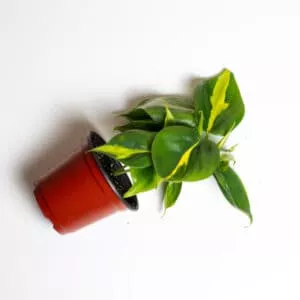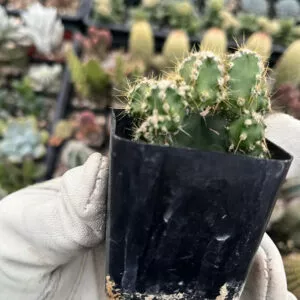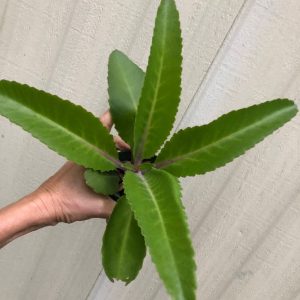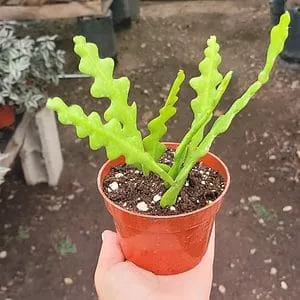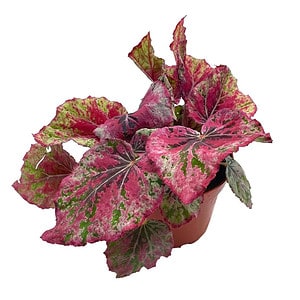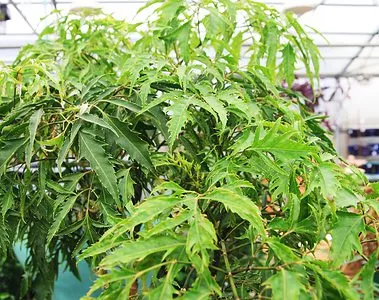No products in the cart.
Table of Contents
Until today it still astonishes me why a neighbor of mine got rid of the spectacular 30-foot-tall colorful crossvine in his garden growing along a trellis. Still, while the crossvine grows fast, I can recommend growing one in your yard.
Crossvine is Native Plants

One thing is for sure if you live in the USA, you will love these native plants. The vining, woody plant adds a vertical accent to any garden. But the problem with most of these native plants is that they grow fast.
Furthermore, it does need some maintenance to keep the size in shape, and you also need to train them on the support provided. Yet, you have a low-maintenance plant with the Bignonia capreolata or crossvine.
Yes, the crossvine can grow up to 50-feet tall with a spread of nine feet wide. It is native to the USA, and you find them growing in the wild in Texas. When in their native habitat, they grow in the flood plains. The plant has a cross-shaped pattern on the inside of the stem.
It is an evergreen vine with glossy yet dark green foliage in summer that can darken in winter to a maroon or purple shade. The leaves form opposite one another. A third leaflet also acts as a tendril with a tip like a claw.
The tendrils claw at bark while climbing, and later it starts to use its roots. Hence, it does not need any support, and the most prominent of all is the gorgeous spring display. You see the fragrant trumpet-shaped flowers all over the place.
The blooms can last up to four weeks, starting with orange flowers turning to reddish-orange with yellow throats. The flower shoots have up to two to five flowers. It also has a mocha scent.
Crossvine Care
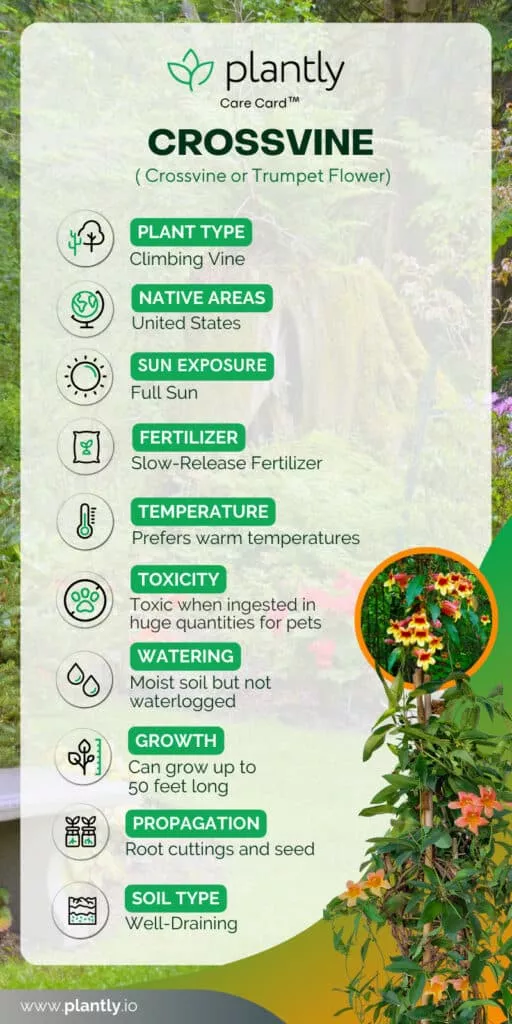
The native vines are the most leisurely climbers to care for growing in the right environment. The leaf arrangement is spectacular with the dark green shade, and when the vine blooms, it looks like a tangerine magnificence. So, with easy care, your plant will greet you with dark purplish-red flowers or orange ones.
Soil Mix Suitable for Crossvine Plant
The crossvine adapts easily to different soils but grows best in moist, well-drained soils. When you provide your vining plants with organic-rich soil, it thrives and can tolerate standing water for a while.
Still, if you are uncertain that the soil does not drain well, we recommend testing it before planting. For example, you can make holes of 12-inches wide by 12-inches deep. Then fill it with water and leave it to drain.
After it drains, refill again, and check to see how long it takes to drain. If the soil drains well, the water will go down about an inch in an hour. If the soil is loose and sandy, it can lead to dry conditions for your plant.
While slow draining soil can result in root rot for your plant over time, you can amend it using a raised mound. Furthermore, the perennial vine grows best in alkaline soils with a pH level between 6.4 to 8.0.
While the crossvine flowers are best if treated as an outdoor plant, they can grow in containers. It also needs well-drained soil with enough drainage holes. You can use a potting mix for your plant.
Crossvine Loves Full Sun

Your crossvine will flourish if you have a spot in the garden with full sun. While they can grow in partial shade, it does need about six hours of sun during the bloom time. With more light, the crossvine blooms are colorful.
The same applies when growing in containers to produce large clusters.
Watering For The Trumpet Shaped Flowers
The semi-evergreen needs to be kept moist but can tolerate soggy soil for brief periods. After planting, give it a deep soak, and you can give it some root stimulator simultaneously. The latter provides stronger root suckers and leads to a vigorous, greener plant.
For a newly planted crossvine, give it water every day in the first growing season. The plant is not drought tolerant, but it is deer resistant. The rootball needs to remain moist. During winter, your plant is dormant and requires less water.
Once your crossvine establishes, it can become a bit drought tolerant, but not for too long. The best time to water is in the morning and not late evenings as it can cause foliar and fungus diseases.
In stock In stock In stock In stock
$15.00
Sold By:
Gardengineering
$20.00Brazil Philodendron
Only 1 available and it’s in 1 people’s basket Rated 4.96 out of 5 based on 24 customer ratings00
Sold By:
Gardengineering
$10.95
Sold By:
SunSoul Plants
$13.95Purple Waffle Plant, Hemigraphis alternata – Potted in a 3″ or 4″ pot with soil
Only 1 available and it’s in 3 people’s basket Rated 4.87 out of 5 based on 98 customer ratings03
Sold By:
SunSoul Plants
$17.95
Sold By:
SunSoul Plants
$22.95LIVE Ficus Altissima ‘Yellow Gem’ in 4″ pot
Rated 4.87 out of 5 based on 98 customer ratings05
Sold By:
SunSoul Plants
$4.99
Sold By:
Cacti and Exotica
Cereus | Fairy castle cactus | 2″ Pot
Rated 4.98 out of 5 based on 59 customer ratings00
Sold By:
Cacti and Exotica
Temperature & Humidity
As your native vines are sun-loving plants, they love warmer weather with high humidity. Also, it does not need much pruning and only trims to keep it tidy and within bounds. You can prune after the spring flower shoots to remove the stray ones as it helps reduce the size.
Also, cease pruning at least two months before the first frost.
Feeding Needs of Crossvine
The woody vine is not a big feeder but benefits from fertilizer after spring flower production. You can use a slow-release fertilizer or organic plant food. Two months before the first frost, cease feeding.
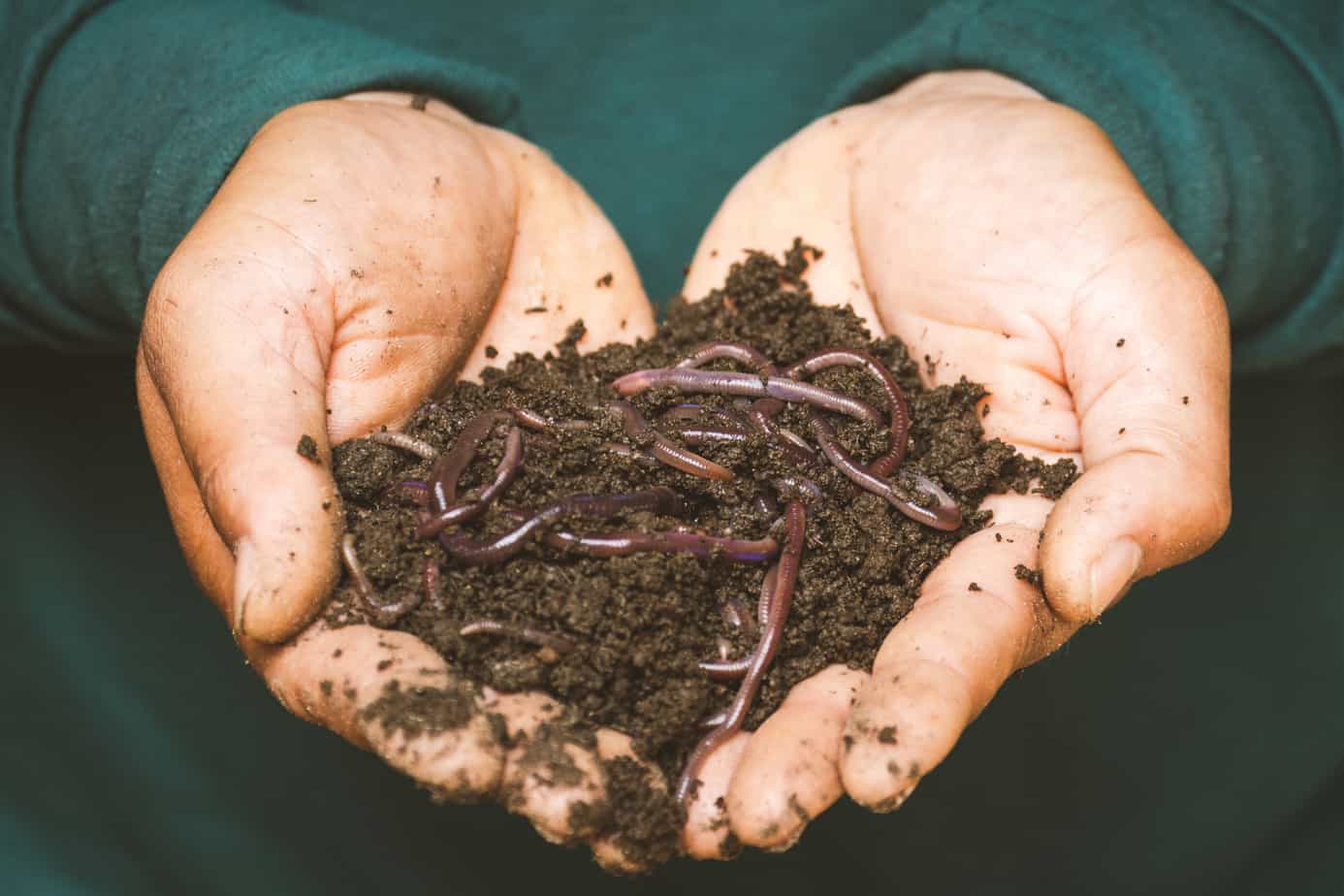
You can also apply some iron or sulfur to the soil to give it a deep green color.
Propagating Your Plant Crossvine
There are different ways you can propagate crossvine cultivars. Here we go into detail on each method you can use.
Growing From Seed
You can buy seeds from your local garden center or here with us to harvest crossvines. The best time to plant is in summer once the pods turn brown. Once you gather the seeds, you can store them to plant another day.
One thing about the crossvine is that the seeds germinate well, and you can plant them about two inches below the soil. You can then water as needed depending on the climate. If you find the ground is not porous, you can add some perlite to your soil mix.
The important thing is that it needs to retain moisture. Yet the water needs to flow freely as well to prevent overwatering. The germination can take up to three weeks. You can plant seeds all year round indoors.
The best way to grow your crossvine is in the ground outdoors after winter in early spring. The reason is that the crossvine does not fair well in frost.
From Root Cuttings
The first step is to identify healthy roots on the parent plant to root your cuttings. You can then cut the on either side to help separate the roots from it. Finally, you can plant it directly into a container or on the ground.
The only thing is that you need to place the root under the ground and water them well in the beginning. After that, you can take softwood cuttings from any part of your crossvine. Young branches develop faster, and you can plant them two inches deep.
Water your new plants once a week to help the cutting retain moisture.
Crossvine Varieties
If you want companion plants to grow with your native vines, we have other crossvine cultivars you can also grow.
Shalimar Red

The plant grows red flowers with a length of up to two inches. It is a deciduous vine with trumpet flowers that climbs rapidly and attracts butterflies.
Tangerine Beauty
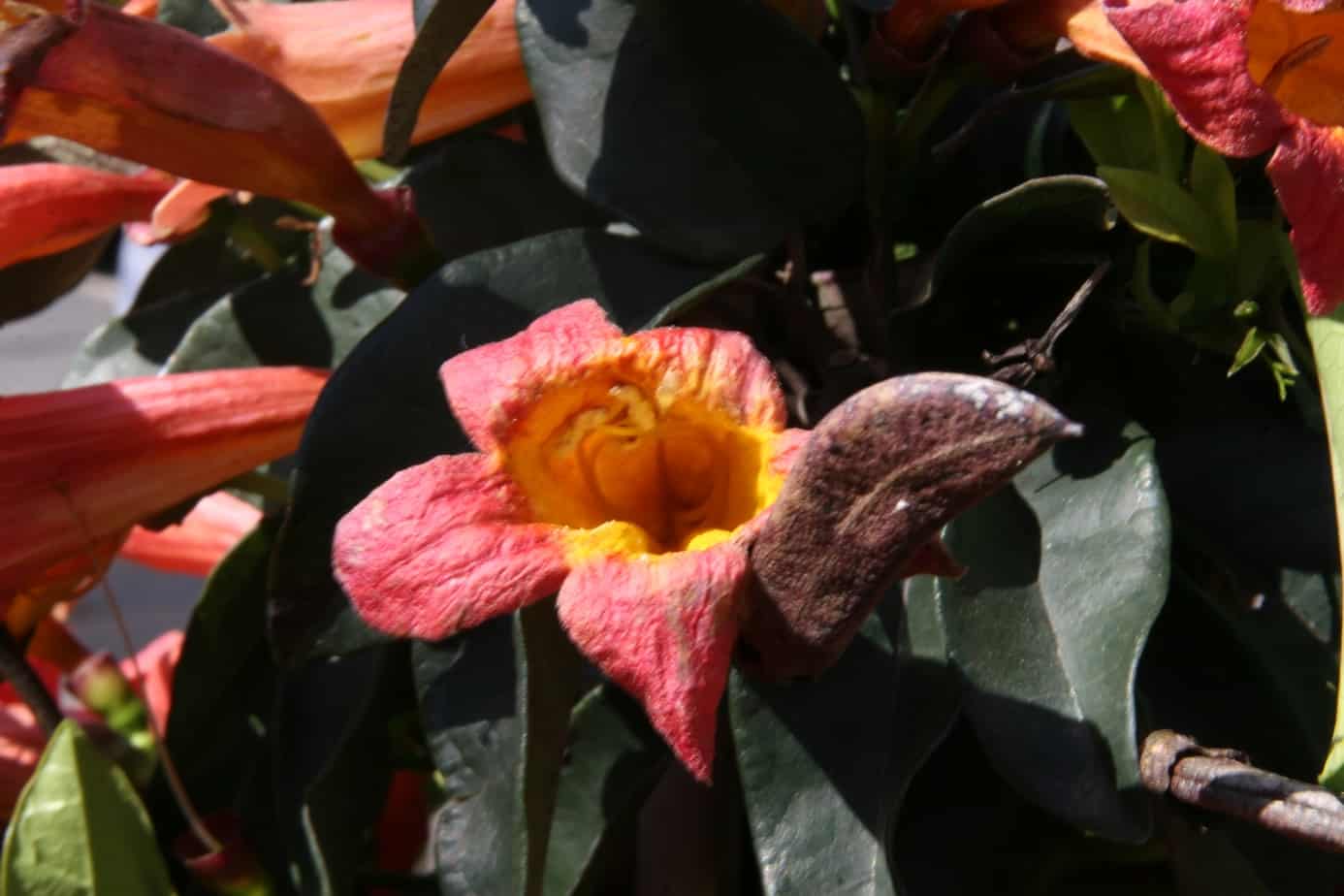
The vine has evergreen foliage that can change in color from a red-violet in early fall to red-orange as it matures.
Helen Fredel
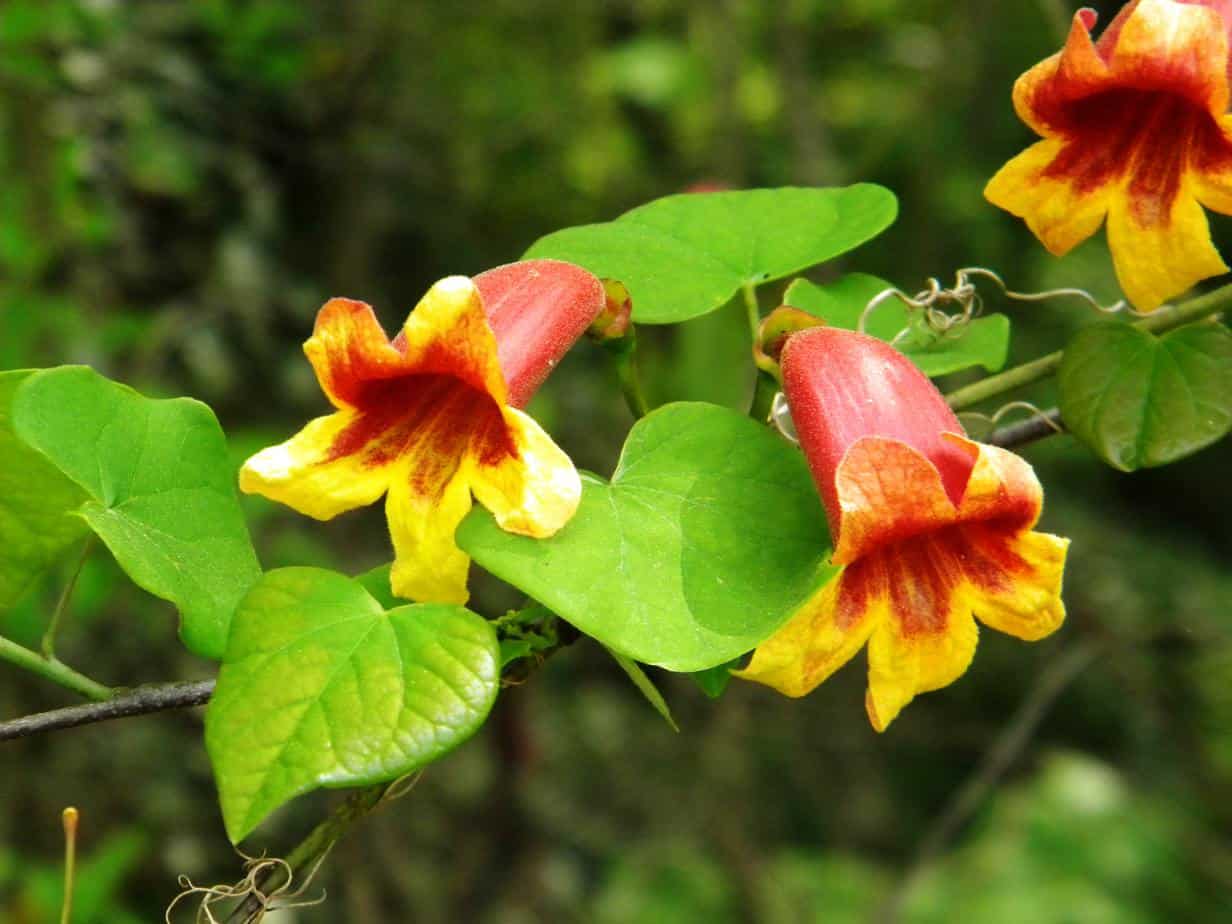
The vine is known as the hummingbird plant with its trumpet-shaped flowers in yellow.
In stock In stock In stock In stock
$12.95
Sold By:
SunSoul Plants
LIVE kalanchoe suarezensis plant potted with soil in 3″ pot
Only 1 available and it’s in 1 people’s basket Rated 4.87 out of 5 based on 98 customer ratings00
Sold By:
SunSoul Plants
$5.00
Sold By:
Cacti and Exotica
Kalanchoe Bracteata—Silverspoon
Rated 4.98 out of 5 based on 59 customer ratings00
Sold By:
Cacti and Exotica
$12.00
Sold By:
Beauties & Beasts
$15.00Cactus -Opuntia microdasys var. pallida f. cristata
Rated 4.83 out of 5 based on 24 customer ratings00
Sold By:
Beauties & Beasts
$6.00 – $12.00
Sold By:
Plants by Stinky Boo
Epiphyllum Anguliger | Fishbone Cactus | Ric Rac Cactus
Only 10 available and it’s in 1 people’s basket Rated 5.00 out of 5 based on 2 customer ratings00
Sold By:
Plants by Stinky Boo
Crossvine Diseases and Pests
There are no significant concerns with pests or diseases regarding the crossvine. You can find leaf spot or Anthracnose showing up. The biggest issue is this is a flammable plant. While not a huge problem, it does become a fire risk if treated as an indoor plant.
It would help to keep an eye on sooty mold, aphids, and mealybugs.
Frequently Asked Questions
Sometimes the Bignonia capreolata part of the trumpet creeper family is confused with the Campsis radicans. But the trumpet vine is best avoided in your landscape. While it is native to the Southeastern united states and has rich nectar, it drops seeds all over the place, making it an invasive plant. The crossvine is also a vigorous grower but much better behaved than your trumpet vine. The crossvine is also a hugger, climbing a structure by sending out shoots in different directions.
The Bignonia capreolata has claw-tipped tendril gripping structures as it climbs. These tendrils reach out in all directions, so you need not train your vine to climb.
The primary use of the crossvine is to make tea, and it is said to give a boost of energy. At the same time, the Cherokee Indians used to divide the stems into four sections. According to them, the inner membrane is sweet. In contrast, other people would crop the vines into small pieces to cook with China brier and sassafras roots to boil as a beer.
You can find the seed or young plants available online at a local nursery. But you need not look too far as Plantly can help you find the crossvine right here to grow in your garden.
Whether you want to buy, sell or simply reach out to other plant enthusiasts, Plantly is the right place to be!
In stock Only 1 left in stock In stock In stock
$24.99
Sold By:
BubbleBlooms
Ponytail Palm Tree, Nolina recurvata, Beaucarnea recurvata
Only 994 available and it’s in 2 people’s basket Rated 4.81 out of 5 based on 279 customer ratings00
Sold By:
BubbleBlooms
$15.00
Sold By:
Stripes and Variegations
Monks Hood
Sold By:
Stripes and Variegations
$10.99
Sold By:
BubbleBlooms
$12.99Venetian Red, Begonia Rex, 4 inch, Painted-Leaf Begonia, Unique Homegrown Exclusive
Rated 4.81 out of 5 based on 279 customer ratings01
Sold By:
BubbleBlooms
$12.00
Sold By:
Stripes and Variegations
Cephalocereus Senilis – Old Man Cactus 4″ Pot
Sold By:
Stripes and Variegations
